Abstract
In a short term prospective study 70 male lead workers performed a series of cognitive tasks on three occasions during an eight month period. Concurrently with the cognitive testing, the concentrations of blood lead, zinc protoporphyrin (ZPP) and urinary aminolaevulinic acid (ALA) were measured. Indicators of lead absorption were stable during the study and each subject was allocated to either a low (below 20 micrograms/dl), medium (21-40 micrograms/dl), or high (41-80 micrograms/dl) group on the basis of their average blood lead concentrations. Performance deficits tended to be restricted to the high lead group and, in general, neither practice nor continued exposure during the study altered the magnitude of these deficits. The main deficit was a slowing of sensory motor reaction time, which was seen most clearly when the cognitive demands of the task were low. In the cognitively simple five choice task, blood lead concentration correlated with impaired decision making, response execution, and "lapses in concentration." In the other cognitive tasks the high blood lead group tended also to be slower by a factor of about 1.08 but the dominance of cognitive over sensory motor demands attenuated the exposure-performance correlations. The high lead group also had difficulty in recalling nouns poorly related to the focus of an earlier semantic classification task. This difficulty increased over time and was one of the few findings that correlated with all measures of lead absorption. It is concluded that the primary psychological profile of lead impairment is one of sensory motor slowing coupled with difficulties in remembering incidental information.
Full text
PDF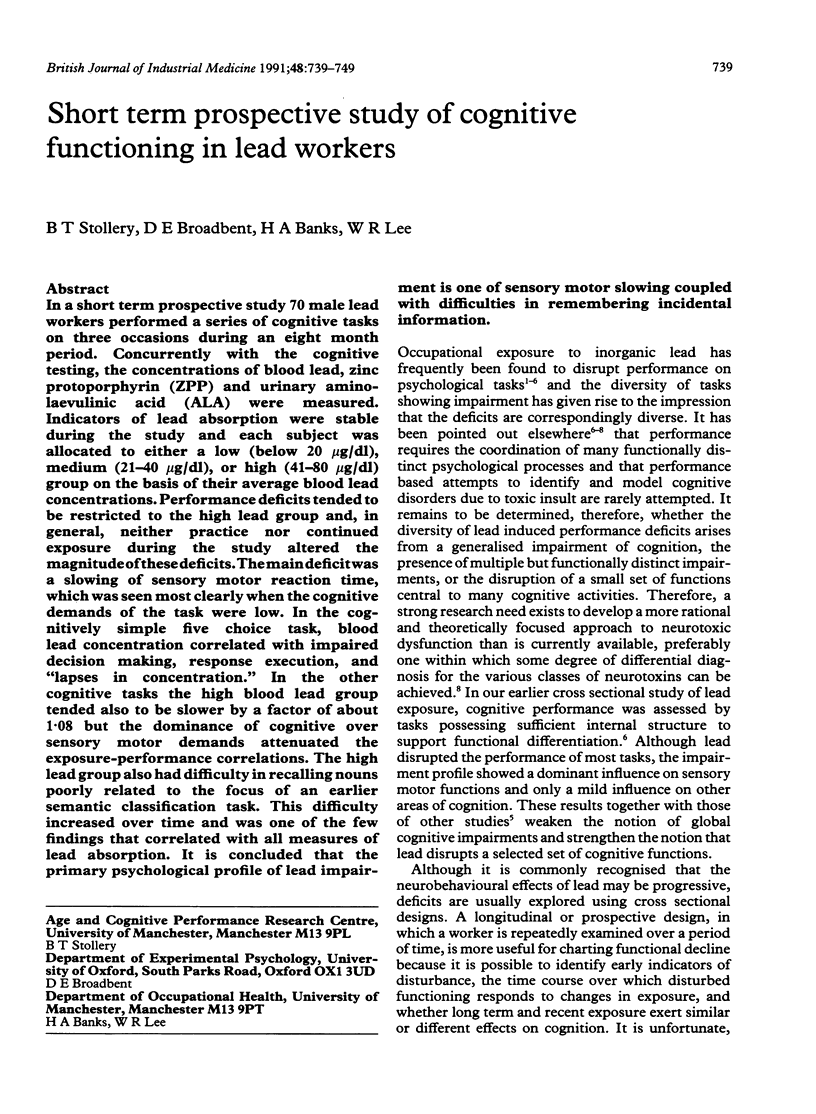
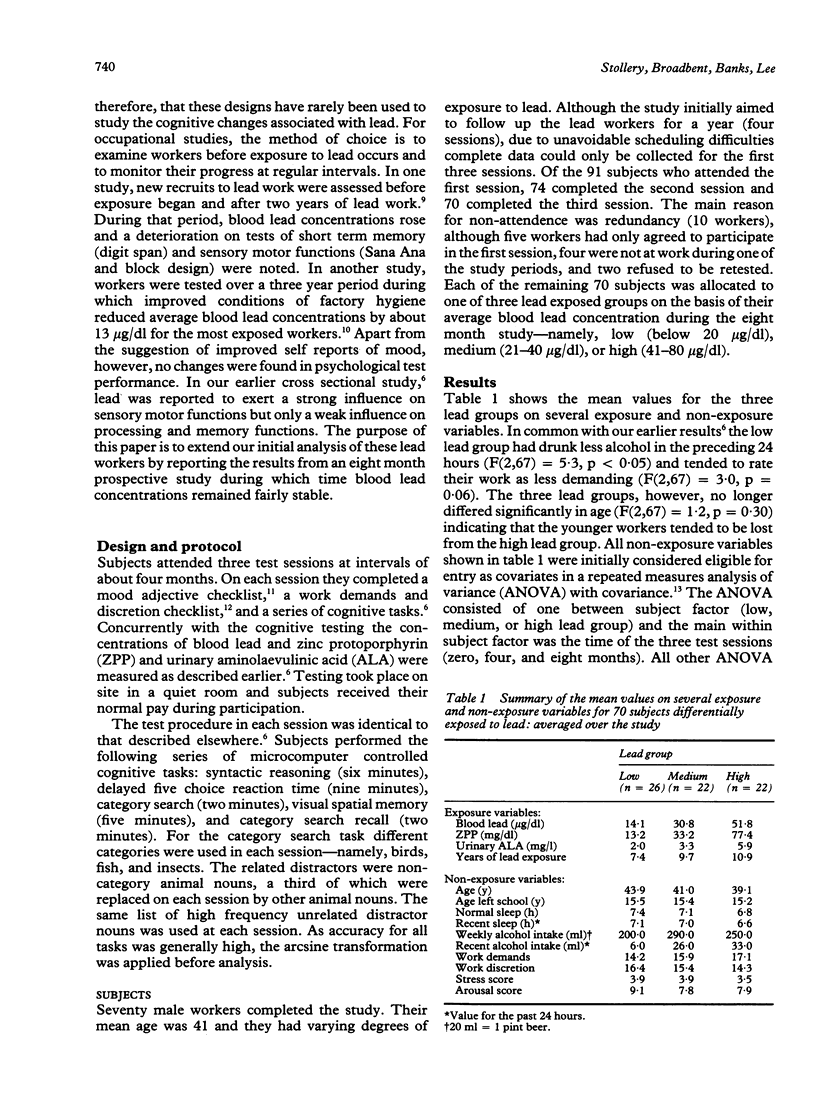
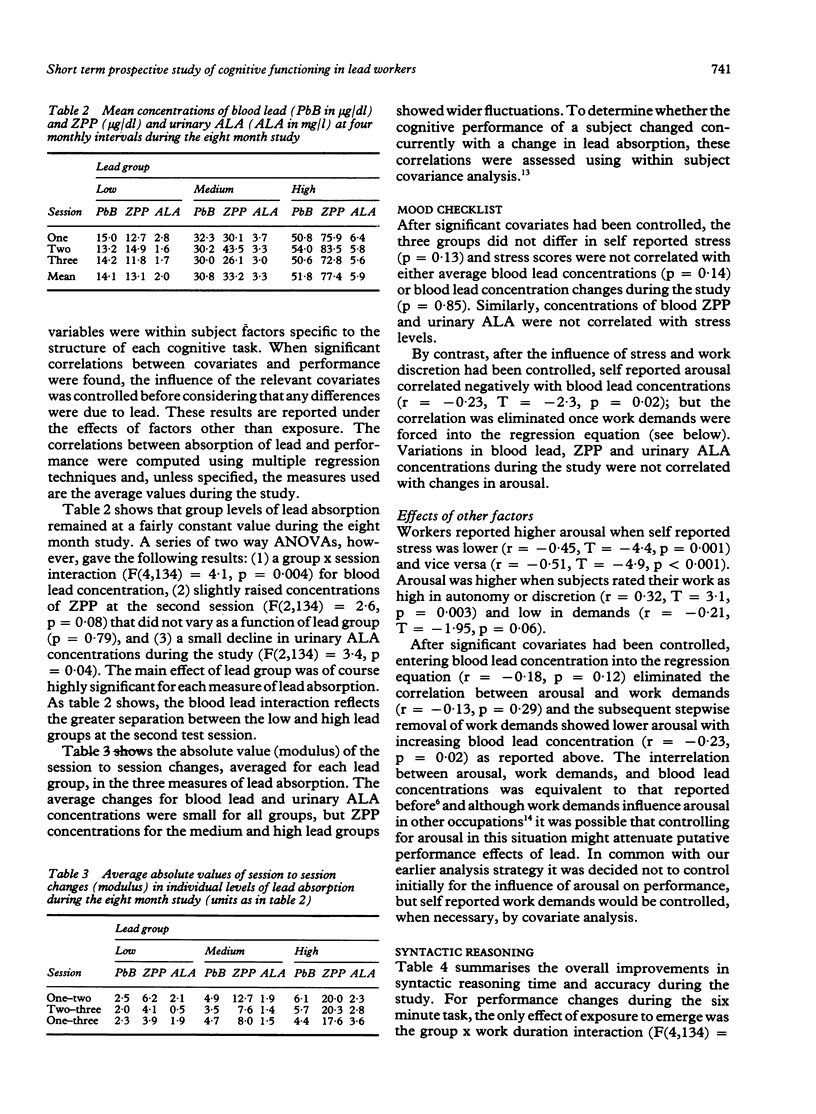
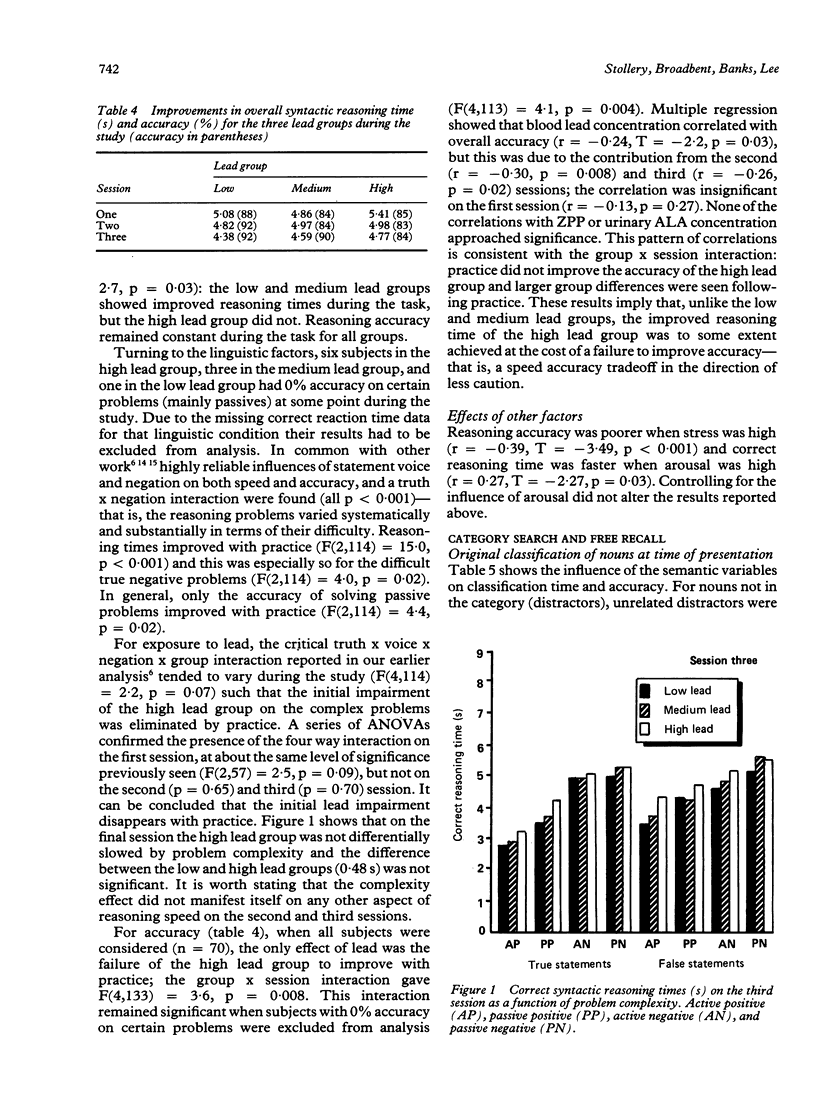
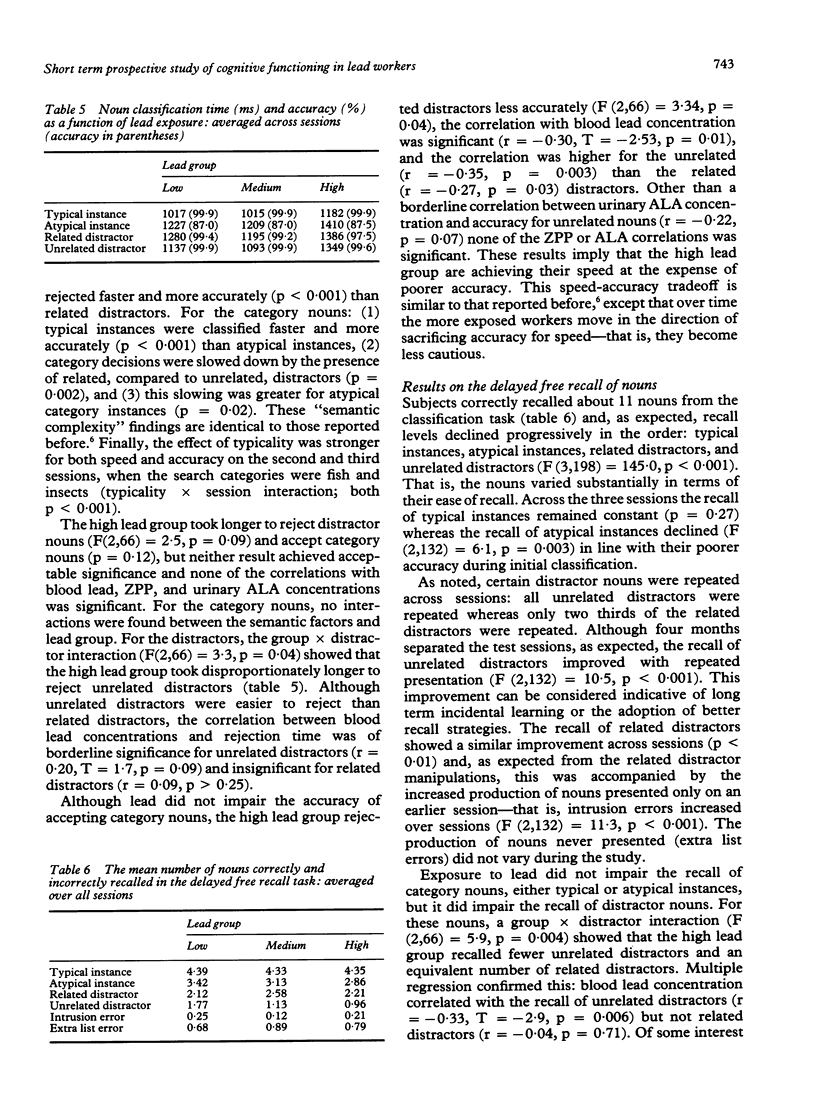
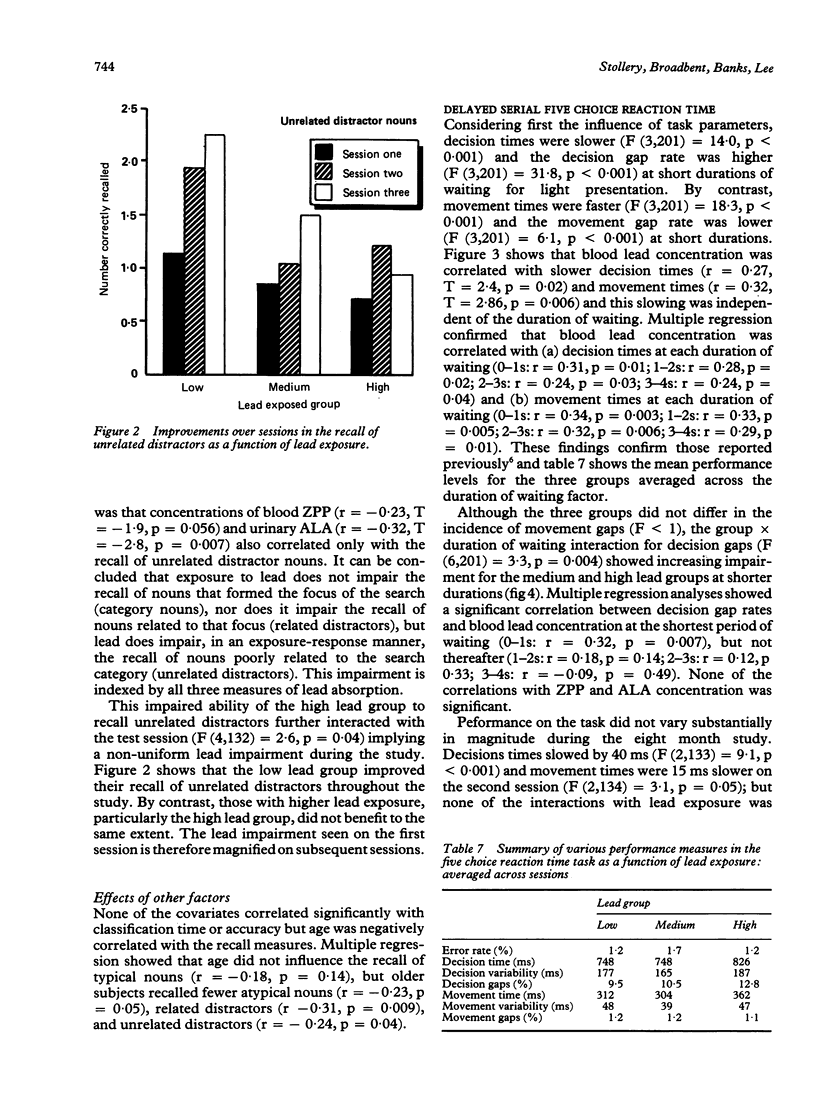
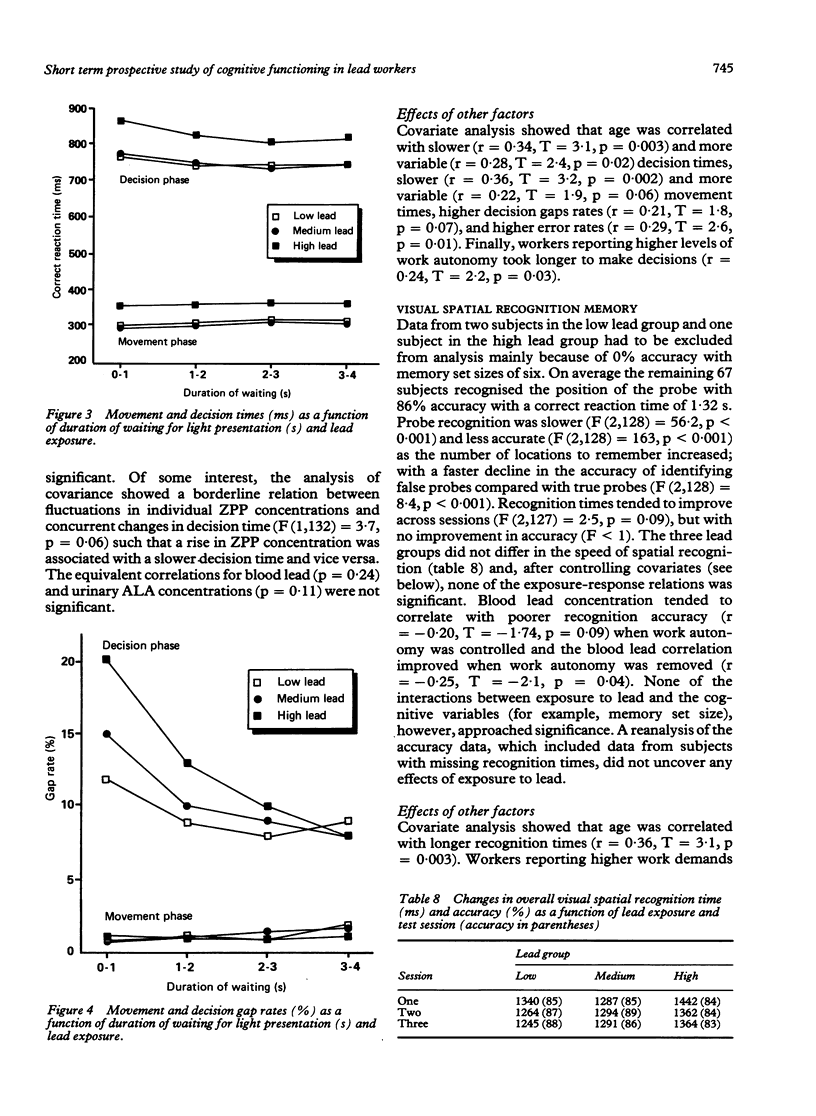
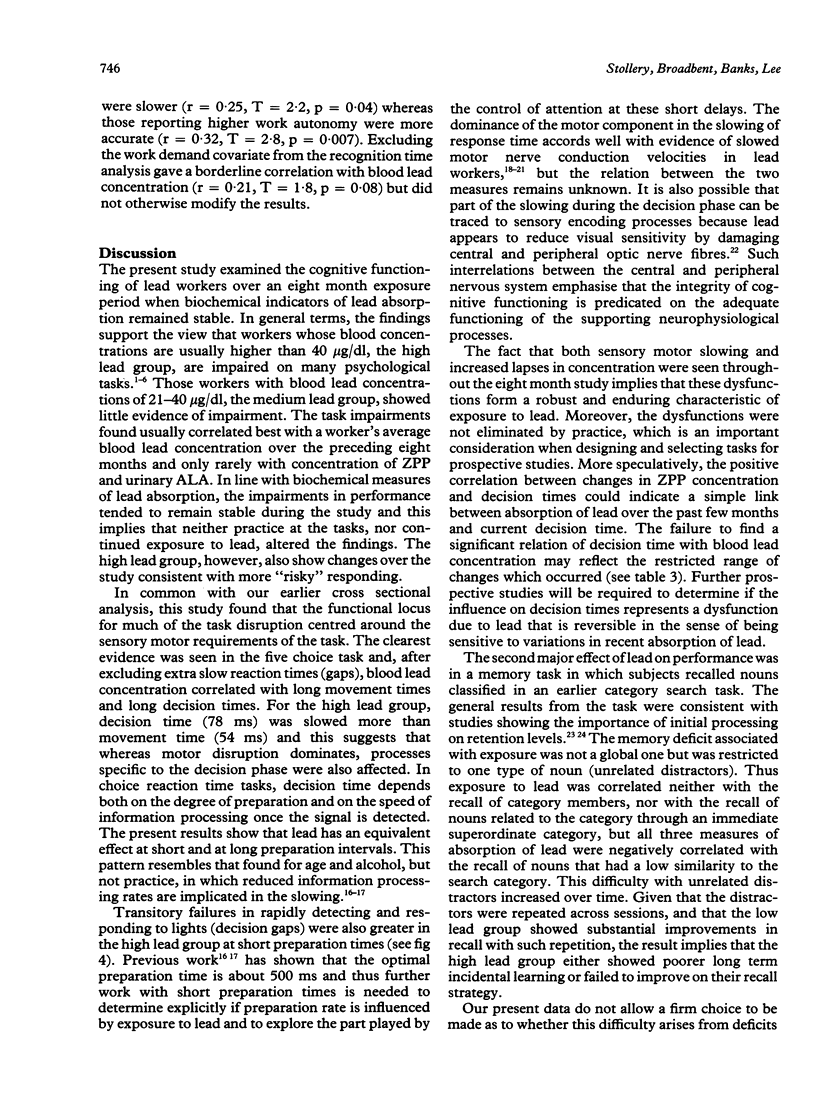
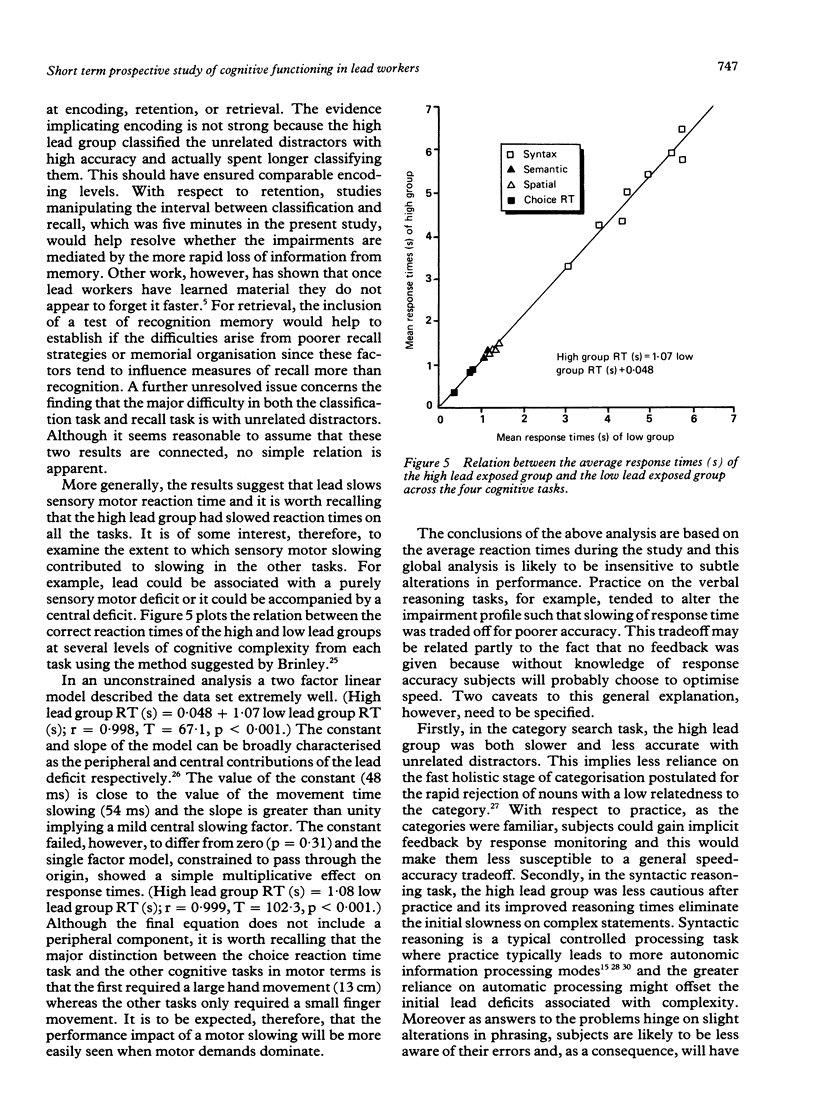
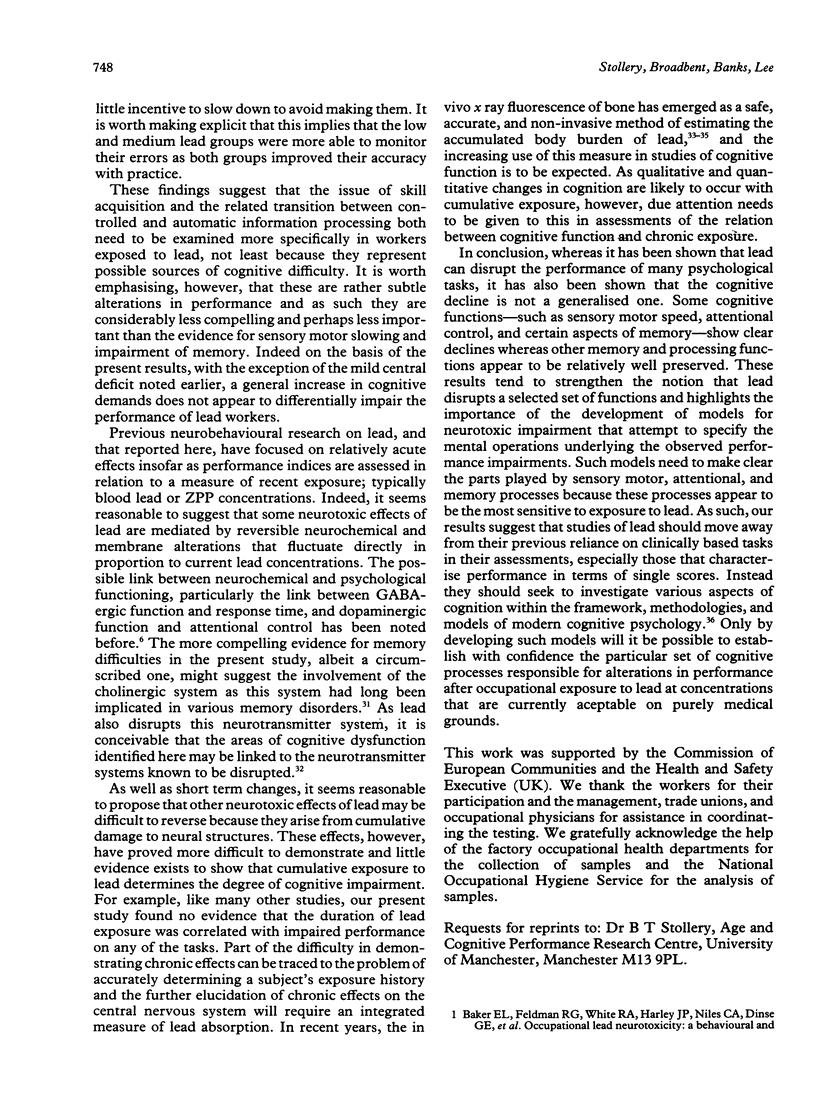
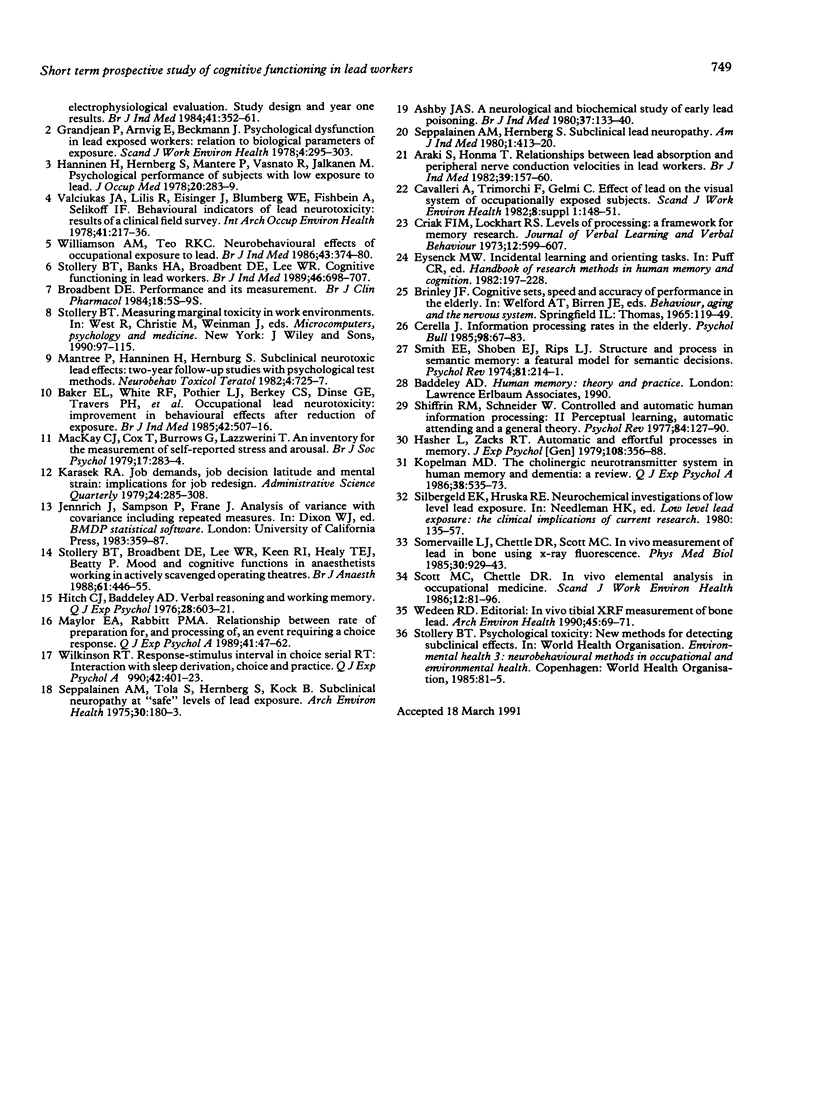
Selected References
These references are in PubMed. This may not be the complete list of references from this article.
- Araki S., Ushio K. Assessment of the body burden of chelatable lead: a model and its application to lead workers. Br J Ind Med. 1982 May;39(2):157–160. doi: 10.1136/oem.39.2.157. [DOI] [PMC free article] [PubMed] [Google Scholar]
- Ashby J. A. A neurological and biochemical study of early lead poisoning. Br J Ind Med. 1980 May;37(2):133–140. doi: 10.1136/oem.37.2.133. [DOI] [PMC free article] [PubMed] [Google Scholar]
- Baker E. L., Feldman R. G., White R. A., Harley J. P., Niles C. A., Dinse G. E., Berkey C. S. Occupational lead neurotoxicity: a behavioural and electrophysiological evaluation. Study design and year one results. Br J Ind Med. 1984 Aug;41(3):352–361. doi: 10.1136/oem.41.3.352. [DOI] [PMC free article] [PubMed] [Google Scholar]
- Baker E. L., White R. F., Pothier L. J., Berkey C. S., Dinse G. E., Travers P. H., Harley J. P., Feldman R. G. Occupational lead neurotoxicity: improvement in behavioural effects after reduction of exposure. Br J Ind Med. 1985 Aug;42(8):507–516. doi: 10.1136/oem.42.8.507. [DOI] [PMC free article] [PubMed] [Google Scholar]
- Broadbent D. E. Performance and its measurement. Br J Clin Pharmacol. 1984;18 (Suppl 1):5S–11S. doi: 10.1111/j.1365-2125.1984.tb02577.x. [DOI] [PMC free article] [PubMed] [Google Scholar]
- Cavalleri A., Trimarchi F., Gelmi C., Baruffini A., Minoia C., Biscaldi G., Gallo G. Effects of lead on the visual system of occupationally exposed subjects. Scand J Work Environ Health. 1982;8 (Suppl 1):148–151. [PubMed] [Google Scholar]
- Cerella J. Information processing rates in the elderly. Psychol Bull. 1985 Jul;98(1):67–83. [PubMed] [Google Scholar]
- Grandjean P., Arnvig E., Beckmann J. Psychological dysfunctions in lead-exposed workers. Relation to biological parameters of exposure. Scand J Work Environ Health. 1978 Dec;4(4):295–303. doi: 10.5271/sjweh.2696. [DOI] [PubMed] [Google Scholar]
- Kopelman M. D. The cholinergic neurotransmitter system in human memory and dementia: a review. Q J Exp Psychol A. 1986 Nov;38(4):535–573. doi: 10.1080/14640748608401614. [DOI] [PubMed] [Google Scholar]
- Mackay C., Cox T., Burrows G., Lazzerini T. An inventory for the measurement of self-reported stress and arousal. Br J Soc Clin Psychol. 1978 Sep;17(3):283–284. doi: 10.1111/j.2044-8260.1978.tb00280.x. [DOI] [PubMed] [Google Scholar]
- Mantere P., Hänninen H., Hernberg S. Subclinical neurotoxic lead effects: two-year follow-up studies with psychological test methods. Neurobehav Toxicol Teratol. 1982 Nov-Dec;4(6):725–727. [PubMed] [Google Scholar]
- Scott M. C., Chettle D. R. In vivo elemental analysis in occupational medicine. Scand J Work Environ Health. 1986 Apr;12(2):81–96. doi: 10.5271/sjweh.2162. [DOI] [PubMed] [Google Scholar]
- Seppäläinen A. M., Hernberg S. Subclinical lead neuropathy. Am J Ind Med. 1980;1(3-4):413–420. doi: 10.1002/ajim.4700010319. [DOI] [PubMed] [Google Scholar]
- Seppäläinen A. M., Tola S., Hernberg S., Kock B. Subclinical neuropathy at "safe" levels of lead exposure. Arch Environ Health. 1975 Apr;30(4):180–183. doi: 10.1080/00039896.1975.10666672. [DOI] [PubMed] [Google Scholar]
- Somervaille L. J., Chettle D. R., Scott M. C. In vivo measurement of lead in bone using x-ray fluorescence. Phys Med Biol. 1985 Sep;30(9):929–943. doi: 10.1088/0031-9155/30/9/005. [DOI] [PubMed] [Google Scholar]
- Stollery B. T., Banks H. A., Broadbent D. E., Lee W. R. Cognitive functioning in lead workers. Br J Ind Med. 1989 Oct;46(10):698–707. doi: 10.1136/oem.46.10.698. [DOI] [PMC free article] [PubMed] [Google Scholar]
- Stollery B. T., Broadbent D. E., Lee W. R., Keen R. I., Healy T. E., Beatty P. Mood and cognitive functions in anaesthetists working in actively scavenged operating theatres. Br J Anaesth. 1988 Oct;61(4):446–455. doi: 10.1093/bja/61.4.446. [DOI] [PubMed] [Google Scholar]
- Valciukas J. A., Lilis R., Eisinger J., Blumberg W. E., Fischbein A., Selikoff I. J. Behavioral indicators of lead neurotoxicity: results of a clinical field survey. Int Arch Occup Environ Health. 1978 Jul 14;41(4):217–236. doi: 10.1007/BF00378753. [DOI] [PubMed] [Google Scholar]
- Wedeen R. D. In vivo tibial XFR measurement of bone lead. Arch Environ Health. 1990 Mar-Apr;45(2):69–71. doi: 10.1080/00039896.1990.9935927. [DOI] [PubMed] [Google Scholar]
- Williamson A. M., Teo R. K. Neurobehavioural effects of occupational exposure to lead. Br J Ind Med. 1986 Jun;43(6):374–380. doi: 10.1136/oem.43.6.374. [DOI] [PMC free article] [PubMed] [Google Scholar]


